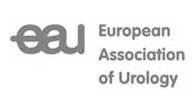What is Renal Colic?

Kidney stones can cause severe pain when they pass into the ureter. This pain is referred to by doctors as renal colic. Renal colic is caused by distension of the kidney because of the blockage of urine flow down the ureter. The pain can be very severe and will come in waves. Discomfort will persist until the stones are passed into the bladder.
Symptoms of Renal Colic
Symptoms may include:
- Severe pain in the back below the ribs on one side
- Pain may also occur over the lower abdomen, groin and during urination
- Pain that fluctuates in intensity
- Frequent urge to urinate
- Pink, brown or red urine that is cloudy or foul-smelling
Diagnosis of Renal Colic
Your doctor will take a medical history and examine you. A urine test is ordered to see if there is blood in the urine and also to see if there is an infection. Blood tests will be ordered to assess kidney function and signs of infection.
A CT scan is the best test for confirmation of renal colic and evaluating the size and location of the stones. Your doctor will also order an X-ray to see if the stones are visible on X-ray.
You should contact your doctor immediately, or visit the emergency department if the pain is severe or if it is accompanied by fever, chills or vomiting.
Treatment for Renal Colic
Treatment of renal colic depends on the size and location of the stones causing pain.
Conservative management
Stones < 4 mm have a passage rate of 70% after 1-2 weeks. Bigger stones are less likely to pass spontaneously.
Passing a stone can cause some discomfort. To relieve the pain, your doctor may recommend painkillers such as paracetamol and ibuprofen. NSAIDs (non-steroidal anti-inflammatory drugs) are generally the most effective at controlling pain from renal colic.
Surgical treatment
Surgery is offered to patients with kidney stones that are too large to pass on their own or because they cause too much pain not controlled with medications. If there is kidney function failure, any signs of infection or a single kidney then emergency surgery to decompress the kidney is required.
Ureteroscopy is a minimally invasive operation to treat kidney stones in the ureter. The surgeon passes a thin lighted tube (ureteroscope) equipped with a camera through the urethra and bladder to the ureter. Once a stone is located, the laser is used to break the stone into pieces, and stone fragments are removed with a special basket. Your doctor may then place a small tube (stent) in the ureter to relieve swelling and promote healing. You may need general or spinal anaesthesia during this procedure.
Recovery is rapid, and you should be able to leave the hospital and return to work in 1-2 days.







